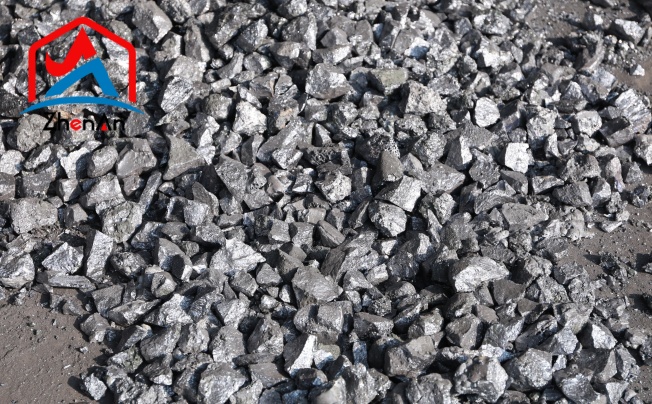High-purity silicon, also known as electronic-grade silicon, is a specialized form of silicon that has been refined to extremely high levels of purity. It is typically defined as silicon with impurity levels below the parts-per-billion (ppb) range, making it suitable for use in critical applications that require utmost cleanliness and precision.
Overview of High-Purity Silicon Production
Raw Materials Used in the Production Process
High-purity silicon, often referred to as electronic-grade silicon, is primarily derived from metallurgical-grade silicon through a complex refining process. The raw material for high-purity silicon production is typically sourced from quartz (silica) or more commonly, from silica sand.
These raw materials undergo purification processes to remove impurities such as iron, aluminum, and other trace elements that could degrade the quality of the final product. Additionally, carbonaceous materials like coke are used as reducing agents in the production process to ensure the purity of the silicon.
Key Steps Involved in Manufacturing High-Purity Silicon
The manufacturing of high-purity silicon involves several crucial steps to achieve the desired level of purity required for various applications. The process typically begins with crushing and grinding the raw materials to reduce them to a fine powder. This powder is then subjected to chemical treatment and thermal processing in specialized furnaces at high temperatures exceeding 2000 degrees Celsius.
This helps remove impurities and convert the material into a molten state suitable for further refining. After extracting impurities through various chemical reactions and filtration methods, the molten silicon undergoes crystallization processes such as Czochralski pulling or floating-zone refining to form solid ingots with high crystal quality.
These ingots are then sliced into wafers that serve as substrates for semiconductor device fabrication. Each step in this intricate manufacturing process plays a critical role in ensuring that the final product meets stringent purity standards demanded by industries like electronics and solar energy.
Applications of High-Purity Silicon
Semiconductor Industry
The semiconductor industry serves as a dynamic hub for technological innovation, powering an array of devices that have become integral to our daily lives. Within this industry, high-purity silicon plays a vital role in the manufacturing of semiconductors.
Semiconductors are the building blocks of electronic devices, enabling the transformation and control of electrical signals. High-purity silicon serves as the foundation for these semiconductors, providing an essential material with exceptional electrical properties.
The demand for high-purity silicon in the semiconductor industry stems from its ability to act as a reliable and efficient conductor of electricity when doped with specific impurities. By carefully controlling these impurities, manufacturers can manipulate the conductivity properties of silicon to create intricate circuits and transistors that form the core functionality of modern electronic devices.
The purity level required for this application is exceptionally high, typically exceeding 99.9999%. Only through meticulous production processes can companies achieve such stringent purity levels necessary for semiconductor manufacturing.
Role of High-Purity Silicon in Semiconductor Manufacturing
It begins with growing single crystals known as ingots through a process called Czochralski pulling or other methods like float zone or epitaxial growth. These ingots are sliced into ultra-thin wafers using precise cutting techniques, which serve as the base substrate for fabricating individual chips.
Once obtained, these wafers undergo several intricate processes to transform them into functional semiconductors. The high-purity silicon acts as a medium where dopants are introduced to modulate its electrical properties precisely.
This doping process enables manufacturers to create p-type (positively charged) and n-type (negatively charged) regions within silicon, forming complex transistor structures capable of amplifying and controlling electrical signals rapidly. Throughout successive stages such as lithography, etching, deposition, and other fabrication steps involving advanced techniques like photolithography and ion implantation, high-purity silicon wafers provide stability and consistency crucial for achieving optimal performance in semiconducting devices.
Impact on Technological Advancements
The pivotal role played by high-purity silicon in semiconductor manufacturing cannot be overstated when considering its profound impact on technological advancements across multiple industries. From consumer electronics like smartphones and tablets to automotive systems, and medical devices to renewable energy technologies – all rely on cutting-edge semiconductor components made possible by high-purity silicon.
For instance, advancements in microprocessors have fueled exponential growth in computing power over recent decades. High-purity silicon has enabled chipmakers to pack more transistors onto a single die through miniaturization while improving overall performance through increased clock speeds and energy efficiency.
Furthermore, emerging fields such as artificial intelligence (AI), and 5G telecommunications network applications like autonomous vehicles heavily depend on sophisticated semiconductors powered by advancements facilitated by high-purity silicon production techniques. As we stand on technology's precipice poised for further breakthroughs like quantum computing or internet-of-things (IoT) revolutionizing connectivity among various devices - it becomes increasingly evident that without high-purity silicon serving as its bedrock foundation – our modern technological landscape would lack its extraordinary depth and breadth.
Future Outlook for High-Purity Silicon Industry
Growth Projections and Market Trends
The high-purity silicon industry is poised for substantial growth in the coming years, driven by the increasing demand from various sectors such as the semiconductor industry, photovoltaics, and electronics manufacturing. According to market research reports, the global high-purity silicon market is projected to experience a steady compound annual growth rate (CAGR) of around 6% between 2021 and 2026.
This growth can be attributed to several factors, including advancements in technology, expanding applications of high-purity silicon, and rising investments in research and development. One key driver for the future growth of the high-purity silicon market is its essential role in the semiconductor industry.
With continuous advancements in technology and increasing demand for electronic devices across sectors like automotive, healthcare, telecommunications, and consumer electronics, there is a growing need for higher-performance semiconductors. High-purity silicon remains at the forefront of these advancements due to its exceptional electrical properties and ability to produce highly efficient semiconductors.
Additionally, the renewable energy sector's rapid expansion contributes significantly to the future demand for high-purity silicon. Photovoltaic cells play a critical role in harnessing solar energy and converting it into electricity.
As governments worldwide continue to focus on sustainable energy solutions and aim to reduce carbon emissions, photovoltaics will witness significant growth. This will consequently drive up the demand for high-quality solar-grade silicon used in photovoltaic cells.
Challenges facing the Industry: Supply Chain Disruptions or Regulatory Changes
While there are promising growth prospects ahead for high-purity silicon manufacturers, it is crucial to address potential challenges that may impact this industry's trajectory. One notable challenge is supply chain disruptions caused by various factors such as geopolitical tensions or natural disasters affecting key production regions.
Supply chain disruptions can lead to shortages of critical raw materials required in high-purity silicon production processes. For example, silica (SiO2) remains a primary source material used by manufacturers.
Any disruption or scarcity of silica resources can have a significant impact on production capabilities. Moreover, regulatory changes pose another challenge that could affect both existing players and prospective entrants into this industry.
Environmental regulations related to emissions control measures may require additional investments in pollution control technologies or changes in manufacturing processes to ensure compliance with stringent standards. Compliance costs associated with these regulations could potentially hinder smaller players' entry into the market while placing financial strain on established manufacturers.
Although opportunities abound for growth within the high-purity silicon industry due to its crucial role in semiconductor manufacturing and renewable energy applications like photovoltaics; challenges such as supply chain disruptions and regulatory changes must be anticipated effectively. Maintaining resilient supply chains through diversification efforts along with proactive engagement with regulators will play an integral part in navigating these challenges successfully while capitalizing on future market trends.






